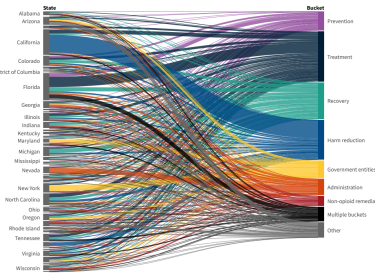
This Week's News in Substance Use: 1/18/19
Sacklers Directed Efforts to Mislead Public About OxyContin, New Documents Indicate, The New York Times
Members of the Sackler family, which owns the company that makes OxyContin, directed years of efforts to mislead doctors and patients about the dangers of the powerful opioid painkiller, a court filing citing previously undisclosed documents contends.
When evidence of growing abuse of the drug became clear in the early 2000s, one of them, Richard Sackler, advised pushing blame onto people who had become addicted.
“We have to hammer on abusers in every way possible,” Mr. Sackler wrote in an email in 2001, when he was president of the company, Purdue Pharma. “They are the culprits and the problem. They are reckless criminals.”
Boston, Cambridge Mayors Plan Visits to Safe Injection Sites in Canada, The Boston Globe
The mayors of Boston and Cambridge are traveling to Canada this week to visit centers where people can inject drugs under medical supervision.
Mayor Martin J. Walsh and Mayor Marc C. McGovern of Cambridge, both members of a state commission investigating the idea of opening such facilities in Massachusetts, planned their trips separately and won’t be traveling together, officials said. Walsh plans to visit Montreal and Toronto, while McGovern will stay in Montreal.
Known as safe injection facilities or safe consumption sites, these centers aim to prevent people who use drugs from dying of overdoses. People obtain illicit drugs elsewhere but come inside to use them under the watchful eyes of medical professionals who can intervene if the users fall unconscious. The centers also provide clean needles, health services, and links to addiction treatment.
Federal Officials Launch Audit of D.C. Government’s Opioid Grant Spending, The Washington Post
Federal officials have launched an audit of the D.C. government’s handling of millions of dollars in grants that the city has been awarded over the past two years to treat opioid addiction and reduce fatal overdoses.
The audit appears to focus on grant money that was not spent as intended to combat the opioid epidemic and on federally funded programs that D.C. government officials failed to implement, according to documents outlining the inquiry obtained by The Washington Post.
Officials with the U.S. Substance Abuse and Mental Health Services Administration (SAMHSA) notified the city of the audit on Jan. 9, and this week are visiting D.C. government offices and at least one treatment provider that received grant money.
Overdose Deaths Tied to Antianxiety Drugs Like Xanax Continue to Rise, Science News
As public health officials tackle opioid addiction and overdoses, another class of prescription drugs has been contributing to a growing number of deaths across the United States.
Benzodiazepines, such as Valium and Xanax, are commonly prescribed for anxiety and insomnia. The drugs are also highly addictive and can be fatal, especially when combined with alcohol or opioids. In the latest sign of the drug’s impact, the number of overdose deaths involving “benzos” rose from 0.54 per 100,000 in 1999 to 5.02 per 100,000 in 2017 among women aged 30 to 64, researchers report January 11 in the Morbidity and Mortality Weekly Report. That’s a spike of 830 percent, surpassed only by increases seen in overdose deaths involving synthetic opioids or heroin.
Overall, there were 10,684 overdose deaths involving benzodiazepines in the United States in 2016, according to the National Institute on Drug Abuse. In 1999, the total was 1,135.
Meth’s Resurgence Spotlights Lack of Meds to Combat the Addiction, Kaiser Health News
In 2016, news reports warned the public of an opioid epidemic gripping the nation.
But Madeline Vaughn, then a lead clinical intake coordinator at the Houston-based addiction treatment organization Council on Recovery, sensed something different was going on with the patients she checked in from the street.
Their behavior, marked by twitchy suspicion, a poor memory and the feeling that someone was following them, signaled that the people coming through the center’s doors were increasingly hooked on a different drug: methamphetamine.




